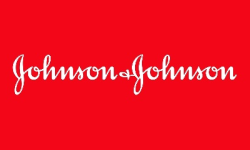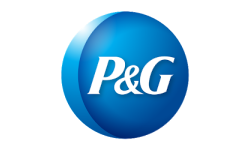
Global Plant Based Protein Supplements Market by Product (Protein Bar, Protein Powder) and Region (North America, Latin America, Europe, Asia Pacific and Middle East & Africa), Forecast To 2028
Industry Insights
In 2017, the global market for plant-based protein supplements was valued at USD 4.18 million. The market is expected to grow at 7.9% CAGR over the forecast period. The rising importance of veganism due to the increased risk of type 2 diabetes and cardiovascular disease associated with meat products will have a positive effect on the growth. Due to numerous media campaigns promoting veganism via media platforms, the global market is expected to experience substantial growth in the next eight years.
In developed markets like the U.S. and Germany, there are increasing concerns about glutamic disorders as well as lactose intolerance. This will likely increase the use of soy and pea protein supplements. Most manufacturers sell their products via various distribution channels, including direct selling contracts and e-commerce portals. These products come in many forms, including powders, liquids and Ready-to-Drink(RTD) capsules.
Different types of retail chains, including pharmacies and mass merchandisers have focused on the growing popularity of sports nutrition over the last few years. The key retail segment is the pharmacy or drugstore, which holds a large share of consumer health spending.
Walgreens, an American-based pharmacy company, has key outlets that have a separate section for sports nutrition. Walgreens offers two types of protein powders: one is under its banner, the other is a premium private-label version called Finest Nutrition. This retail trend is expected to offer buyers more options for selecting the best nutritional solutions.
Raw Material Insights
The market for plant-based protein supplements can be divided into soy, spirulina and pumpkin seed, as well as rice, pea, and other raw materials. In 2017, the soy segment represented 66.2% in terms of market share and revenue. Soy protein supplements are made from soybeans, which is one of very few sources that provide all nine essential amino acids.
You can purchase these products in concentrates or isolates. Segment demand is expected to rise over the next few years due to soy products' inclusion of glutamine, arginine and Branched Chain Amin Acids (BCAAs).
The pea protein contains all essential amino acids including BCAAs. This protein is great for muscle building and quick absorption. Due to the growing popularity of pea protein among vegans and vegetarians, this segment will account for 20.3% market share by 2025. This product is also a good choice for people who are allergic to dairy or egg proteins.
Product Insights
Due to the high consumption of protein powder among gym professionals, it was the dominant product segment. It accounted for 68% of the market share in 2017. This is consistent with the fact that powder products are becoming more popular among elite athletes, bodybuilders, and casual workout enthusiasts. Its ease of incorporation in milk and water will likely result in high market penetration. Market growth is possible through rapid innovation in the manufacturing of products that contain a wide range of amino acids. The focus on specific functions such as muscle repair and weight loss and energy balance will be key.
Over the forecast period, bars will see a 6.8% CAGR. Consumer preference for healthier snacks, along with the ever-increasing pace and trend towards on-the-go snacking, has led to a greater demand for bars and bite-sized snacks.
Over the forecast period, the Ready-to-Drink segment (RTD), is expected to grow at 8.2%. RTD supplements can be consumed straight from the bottle without any preparation or mixing. RTDs provide a high level of nutrients and can be taken pre-workout or post-workout. These drinks have a high intake of nutrients that are easy to absorb. They promote muscle recovery and help in lean muscle development.
Distribution Channel Insights
Due to their accessibility and low prices, online stores made up the majority of 2017 sales. It is expected that the rising demand for supplements via e-commerce platforms like Amazon and Alibaba will lead to growth. Due to the large capital investments made by major manufacturers in DTC channels, the Direct-to-Customer channel (DTC), is expected to see growth during the forecast period.
In 2017, 13% of all protein product sales came from mass retailers or supermarkets. Walmart and other major retailers in the U.S. are expanding into this market, as well as investing in private label varieties. Retail sales will experience a slower rate of growth over the forecast period due to increased competition from online retailers and DTC channels.
Other segments include pharmacies, small-scale retailers, and fitness centers. These channels will see a moderate growth in sales over the forecast period due to the increasing number of fitness centers across countries like the U.S., Brazil and Argentina.
Application Insights
In 2017, the sport nutrition dominated the market with 77.3% revenue. Growth is expected to be driven by a rise in demand for sport nutrition supplements for endurance, core, and strength athletes, as well as professional athletes. Product demand is expected to rise due to rising demand for supplements that promote lean muscle growth, increase performance, stamina, and weight management, as well as an increasing number of gym-goers.
In 2017, 22.7% of the market share was accounted for by additional nutritional segments. In 2017, 22.7% of the market share was for nutrition supplements. This is due to increasing awareness about the health benefits of a balanced diet and regular exercise.
Regional Insights
North America was responsible for 50.7% global revenue share in 2017. New brand campaigns on television and social media will increase awareness of veganism, as well as shifting trends towards vegetarianism. This is expected to boost demand for plant-based protein supplements.
Due to an increase in sports nutrition supplements, the U.S. market is expected to see steady growth over the forecast period. The forecast period will also see a rise in consumer awareness regarding healthy eating habits and weight management.
By 2025, Asia Pacific will account for 16.6% of global market revenue. New investment opportunities are expected to be opened by rising spending on the development of natural ingredients, including soy, for nutraceuticals production in China and Japan. Favorable factors such as rising disposable income, urbanization, and other favorable factors are expected to play a major role in the promotion of consumption, especially among vegans.
In 2017, 5.0% of global revenue was attributed to South America. Due to the increasing number of fitness centers and health clubs in countries such as Brazil and Argentina, the market is expected to experience significant growth over this period. The market will be boosted by the presence of major players and easy access to raw materials such as soybeans.
Market Share in Plant-Based Protein Supplements
Glanbia plc, NOW Foods, MusclePharm Corporation, CytoSport, Inc., Quest, NBTY are the key players in this market. This market is characterised by joint ventures, capacity expansions and mergers and acquisitions. There are also substantial distribution and branding decisions that improve manufacturers' market share. Over the forecast period, product innovation will continue to be a key success factor.
Manufacturers of nutritional supplements are likely to make new investments due to increasing concerns about the cardiovascular risks associated with animal nutrition. Infrastructural development and the establishment multinational corporations (MNC) have been two of the most important steps taken by governments in developing countries like India and China over the last few years.
E-commerce portals are becoming more popular as a selling medium for all buyer segments. They offer service benefits such as free delivery to your home, cashback offers and coupons. This will force nutraceutical companies to form partnerships with online businesses. To maintain a competitive edge, manufacturers will continue to use product innovation and tie ups with ecommerce firms as their main strategies.
Due to increased awareness of non-GMO and gluten free diets, North America will likely remain a major market for supplement companies to position premium product forms. The U.S. is also expected to be a favorable market due to its easy availability of plant-based protein supplements in supermarkets and increasing gluten-free labeling at restaurants and food joints.
The Report Covers Certain Segments
This report predicts revenue growth at the global, regional and country level and offers an analysis of industry trends in each sub-segment from 2014 to 2025. Grand View Research has divided the global market for plant-based protein supplements on the basis raw material, product and distribution channel. The region is also used in this report.
-
The Raw Material Outlook (Revenue USD Millions, 2014-2025)
-
Soy
-
Spirulina
-
Pumpkin Seed
-
Hemp
-
Rice
-
Pea
-
Other
-
-
Product Outlook (Revenue USD Million, 2014-2025)
-
Protein Powder
-
Protein Bars
-
Ready-to-Drink (RTD).
-
Other
-
-
Distribution Channel Outlook (Revenue USD Million, 2014-2025)
-
Supermarket
-
Online Stores
-
DTC
-
Other
-
-
App Outlook (Revenue USD Million, 2014-2025)
-
Sports Nutrition
-
Additional Nutrition
-
-
Regional Outlook (Revenue USD Million, 2014-2025)
-
North America
-
The U.S.
-
-
Europe
-
Germany
-
The U.K.
-
-
Asia Pacific
-
China
-
India
-
-
Central & South America
-
Brazil
-
-
Middle East & Africa
-
These are the most frequently asked questions about this report
What is the size of the market for plant-based protein supplements?b. Global plant-based protein supplements market was valued at USD 5.5 billion in 2019, and is forecast to grow to USD 5.9 billion by 2020.
What is the market growth for plant-based protein supplements?b. Global plant-based protein supplements market will grow at 7.1% compound annual growth rate between 2019 and 2025, to reach USD 8.4 Billion by 2025.
Which market segment had the largest share of the plant-based protein supplements market?b. North America was the market leader in plant-based protein supplements with a 52% share in 2019. This can be attributed to increasing awareness of the vegan diet and a shift towards vegetarianism due to new brand campaigns on television.
What are the major players in the market for plant-based protein supplements?b. Glanbia plc, NOW Foods, MusclePharm Corporation, CytoSport, Inc., Quest, NBTY are some of the key players in the market for plant-based protein supplements.
What are the main factors that drive the market for plant-based protein supplements?b. The market for plant-based protein supplements is growing due to the increasing importance of veganism and the increased risk of type 2 diabetes and cardiovascular disease associated with meat products.
Up Market Research published a new report titled “Plant Based Protein Supplements Market research report which is segmented by Product (Protein Bar, Protein Powder), By Players/Companies capacity expansions, MusclePharm Corporation, substantial distribution and branding decisions to improve the market share of manufacturers Product innovation is projected to remain a key success factor for the players over the forecast period, NBTY The market is characterized by joint ventures, Glanbia plc, Inc, Quest, NOW Foods, CytoSport, mergers and acquisitions”. As per the study the market is expected to grow at a CAGR of XX% in the forecast period.
Report Scope
| Report Attributes | Report Details |
| Report Title | Plant Based Protein Supplements Market Research Report |
| By Product | Protein Bar, Protein Powder |
| By Companies | capacity expansions, MusclePharm Corporation, substantial distribution and branding decisions to improve the market share of manufacturers Product innovation is projected to remain a key success factor for the players over the forecast period, NBTY The market is characterized by joint ventures, Glanbia plc, Inc, Quest, NOW Foods, CytoSport, mergers and acquisitions |
| Regions Covered | North America, Europe, APAC, Latin America, MEA |
| Base Year | 2020 |
| Historical Year | 2018 to 2019 (Data from 2010 can be provided as per availability) |
| Forecast Year | 2028 |
| Number of Pages | 221 |
| Number of Tables & Figures | 155 |
| Customization Available | Yes, the report can be customized as per your need. |
The report covers comprehensive data on emerging trends, market drivers, growth opportunities, and restraints that can change the market dynamics of the industry. It provides an in-depth analysis of the market segments which include products, applications, and competitor analysis.

Global Plant Based Protein Supplements Market Report Segments:
The market is segmented by Product (Protein Bar, Protein Powder).
Plant Based Protein Supplements Market research report delivers a close watch on leading competitors with strategic analysis, micro and macro market trend and scenarios, pricing analysis and a holistic overview of the market situations in the forecast period. It is a professional and a detailed report focusing on primary and secondary drivers, market share, leading segments and geographical analysis. Further, key players, major collaborations, merger & acquisitions along with trending innovation and business policies are reviewed in the report.
Key Benefits for Industry Participants & Stakeholders:
- Industry drivers, restraints, and opportunities covered in the study
- Neutral perspective on the market performance
- Recent industry trends and developments
- Competitive landscape & strategies of key players
- Potential & niche segments and regions exhibiting promising growth covered
- Historical, current, and projected market size, in terms of value
- In-depth analysis of the Plant Based Protein Supplements Market
Overview of the regional outlook of the Plant Based Protein Supplements Market:
Based on region, the market is segmented into North America, Europe, Asia Pacific, Latin America and Middle East & Africa (MEA). North America region is further bifurcated into countries such as U.S., and Canada. The Europe region is further categorized into U.K., France, Germany, Italy, Spain, Russia, and Rest of Europe. Asia Pacific is further segmented into China, Japan, South Korea, India, Australia, South East Asia, and Rest of Asia Pacific. Latin America region is further segmented into Brazil, Mexico, and Rest of Latin America, and the MEA region is further divided into GCC, Turkey, South Africa, and Rest of MEA.

Highlights of The Plant Based Protein Supplements Market Report:
- The market structure and projections for the coming years.
- Drivers, restraints, opportunities, and current trends of Plant Based Protein Supplements Market.
- Historical data and forecast.
- Estimations for the forecast period 2028.
- Developments and trends in the market.
1. Protein Bar
2. Protein Powder
- Market scenario by region, sub-region, and country.
- Market share of the market players, company profiles, product specifications, SWOT analysis, and competitive landscape.
- Analysis regarding upstream raw materials, downstream demand, and current market dynamics.
- Government Policies, Macro & Micro economic factors are also included in the report.
We have studied the Plant Based Protein Supplements Market in 360 degrees via. both primary & secondary research methodologies. This helped us in building an understanding of the current market dynamics, supply-demand gap, pricing trends, product preferences, consumer patterns & so on. The findings were further validated through primary research with industry experts & opinion leaders across countries. The data is further compiled & validated through various market estimation & data validation methodologies. Further, we also have our in-house data forecasting model to predict market growth up to 2028.
How you may use our products:
- Correctly Positioning New Products
- Market Entry Strategies
- Business Expansion Strategies
- Consumer Insights
- Understanding Competition Scenario
- Product & Brand Management
- Channel & Customer Management
- Identifying Appropriate Advertising Appeals

Reasons to Purchase the Plant Based Protein Supplements Market Report:
- The report includes a plethora of information such as market dynamics scenario and opportunities during the forecast period
- Segments and sub-segments include quantitative, qualitative, value (USD Million,) and volume (Units Million) data.
- Regional, sub-regional, and country level data includes the demand and supply forces along with their influence on the market.
- The competitive landscape comprises share of key players, new developments, and strategies in the last three years.
- Comprehensive companies offering products, relevant financial information, recent developments, SWOT analysis, and strategies by these players.
Chapter 2 Assumptions and Acronyms Used
Chapter 3 Research Methodology
Chapter 4 Plant Based Protein Supplements Market Overview
4.1 Introduction
4.1.1 Market Taxonomy
4.1.2 Market Definition
4.1.3 Macro-Economic Factors Impacting the Market Growth
4.2 Plant Based Protein Supplements Market Dynamics
4.2.1 Market Drivers
4.2.2 Market Restraints
4.2.3 Market Opportunity
4.3 Plant Based Protein Supplements Market - Supply Chain Analysis
4.3.1 List of Key Suppliers
4.3.2 List of Key Distributors
4.3.3 List of Key Consumers
4.4 Key Forces Shaping the Plant Based Protein Supplements Market
4.4.1 Bargaining Power of Suppliers
4.4.2 Bargaining Power of Buyers
4.4.3 Threat of Substitution
4.4.4 Threat of New Entrants
4.4.5 Competitive Rivalry
4.5 Global Plant Based Protein Supplements Market Size & Forecast, 2018-2028
4.5.1 Plant Based Protein Supplements Market Size and Y-o-Y Growth
4.5.2 Plant Based Protein Supplements Market Absolute $ Opportunity
Chapter 5 Global Plant Based Protein Supplements Market Analysis and Forecast by Product
5.1 Introduction
5.1.1 Key Market Trends & Growth Opportunities by Product
5.1.2 Basis Point Share (BPS) Analysis by Product
5.1.3 Absolute $ Opportunity Assessment by Product
5.2 Plant Based Protein Supplements Market Size Forecast by Product
5.2.1 Protein Bar
5.2.2 Protein Powder
5.3 Market Attractiveness Analysis by Product
Chapter 6 Global Plant Based Protein Supplements Market Analysis and Forecast by Region
6.1 Introduction
6.1.1 Key Market Trends & Growth Opportunities by Region
6.1.2 Basis Point Share (BPS) Analysis by Region
6.1.3 Absolute $ Opportunity Assessment by Region
6.2 Plant Based Protein Supplements Market Size Forecast by Region
6.2.1 North America
6.2.2 Europe
6.2.3 Asia Pacific
6.2.4 Latin America
6.2.5 Middle East & Africa (MEA)
6.3 Market Attractiveness Analysis by Region
Chapter 7 Coronavirus Disease (COVID-19) Impact
7.1 Introduction
7.2 Current & Future Impact Analysis
7.3 Economic Impact Analysis
7.4 Government Policies
7.5 Investment Scenario
Chapter 8 North America Plant Based Protein Supplements Analysis and Forecast
8.1 Introduction
8.2 North America Plant Based Protein Supplements Market Size Forecast by Country
8.2.1 U.S.
8.2.2 Canada
8.3 Basis Point Share (BPS) Analysis by Country
8.4 Absolute $ Opportunity Assessment by Country
8.5 Market Attractiveness Analysis by Country
8.6 North America Plant Based Protein Supplements Market Size Forecast by Product
8.6.1 Protein Bar
8.6.2 Protein Powder
8.7 Basis Point Share (BPS) Analysis by Product
8.8 Absolute $ Opportunity Assessment by Product
8.9 Market Attractiveness Analysis by Product
Chapter 9 Europe Plant Based Protein Supplements Analysis and Forecast
9.1 Introduction
9.2 Europe Plant Based Protein Supplements Market Size Forecast by Country
9.2.1 Germany
9.2.2 France
9.2.3 Italy
9.2.4 U.K.
9.2.5 Spain
9.2.6 Russia
9.2.7 Rest of Europe
9.3 Basis Point Share (BPS) Analysis by Country
9.4 Absolute $ Opportunity Assessment by Country
9.5 Market Attractiveness Analysis by Country
9.6 Europe Plant Based Protein Supplements Market Size Forecast by Product
9.6.1 Protein Bar
9.6.2 Protein Powder
9.7 Basis Point Share (BPS) Analysis by Product
9.8 Absolute $ Opportunity Assessment by Product
9.9 Market Attractiveness Analysis by Product
Chapter 10 Asia Pacific Plant Based Protein Supplements Analysis and Forecast
10.1 Introduction
10.2 Asia Pacific Plant Based Protein Supplements Market Size Forecast by Country
10.2.1 China
10.2.2 Japan
10.2.3 South Korea
10.2.4 India
10.2.5 Australia
10.2.6 South East Asia (SEA)
10.2.7 Rest of Asia Pacific (APAC)
10.3 Basis Point Share (BPS) Analysis by Country
10.4 Absolute $ Opportunity Assessment by Country
10.5 Market Attractiveness Analysis by Country
10.6 Asia Pacific Plant Based Protein Supplements Market Size Forecast by Product
10.6.1 Protein Bar
10.6.2 Protein Powder
10.7 Basis Point Share (BPS) Analysis by Product
10.8 Absolute $ Opportunity Assessment by Product
10.9 Market Attractiveness Analysis by Product
Chapter 11 Latin America Plant Based Protein Supplements Analysis and Forecast
11.1 Introduction
11.2 Latin America Plant Based Protein Supplements Market Size Forecast by Country
11.2.1 Brazil
11.2.2 Mexico
11.2.3 Rest of Latin America (LATAM)
11.3 Basis Point Share (BPS) Analysis by Country
11.4 Absolute $ Opportunity Assessment by Country
11.5 Market Attractiveness Analysis by Country
11.6 Latin America Plant Based Protein Supplements Market Size Forecast by Product
11.6.1 Protein Bar
11.6.2 Protein Powder
11.7 Basis Point Share (BPS) Analysis by Product
11.8 Absolute $ Opportunity Assessment by Product
11.9 Market Attractiveness Analysis by Product
Chapter 12 Middle East & Africa (MEA) Plant Based Protein Supplements Analysis and Forecast
12.1 Introduction
12.2 Middle East & Africa (MEA) Plant Based Protein Supplements Market Size Forecast by Country
12.2.1 Saudi Arabia
12.2.2 South Africa
12.2.3 UAE
12.2.4 Rest of Middle East & Africa (MEA)
12.3 Basis Point Share (BPS) Analysis by Country
12.4 Absolute $ Opportunity Assessment by Country
12.5 Market Attractiveness Analysis by Country
12.6 Middle East & Africa (MEA) Plant Based Protein Supplements Market Size Forecast by Product
12.6.1 Protein Bar
12.6.2 Protein Powder
12.7 Basis Point Share (BPS) Analysis by Product
12.8 Absolute $ Opportunity Assessment by Product
12.9 Market Attractiveness Analysis by Product
Chapter 13 Competition Landscape
13.1 Plant Based Protein Supplements Market: Competitive Dashboard
13.2 Global Plant Based Protein Supplements Market: Market Share Analysis, 2019
13.3 Company Profiles (Details – Overview, Financials, Developments, Strategy)
13.3.1 capacity expansions
13.3.2 MusclePharm Corporation
13.3.3 substantial distribution and branding decisions to improve the market share of manufacturers Product innovation is projected to remain a key success factor for the players over the forecast period
13.3.4 NBTY The market is characterized by joint ventures
13.3.5 Glanbia plc
13.3.6 Inc
13.3.7 Quest
13.3.8 NOW Foods
13.3.9 CytoSport
13.3.10 mergers and acquisitions
The global Plant Based Protein Supplements market has been segmented based on
By Product
- Protein Bar
- Protein Powder
- Asia Pacific
- North America
- Latin America
- Europe
- Middle East & Africa
- capacity expansions
- MusclePharm Corporation
- substantial distribution and branding decisions to improve the market share of manufacturers Product innovation is projected to remain a key success factor for the players over the forecast period
- NBTY The market is characterized by joint ventures
- Glanbia plc
- Inc
- Quest
- NOW Foods
- CytoSport
- mergers and acquisitions
Related Reports
Some other reports from this category!



















